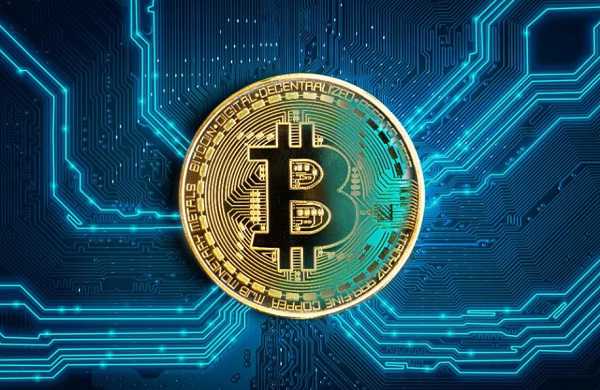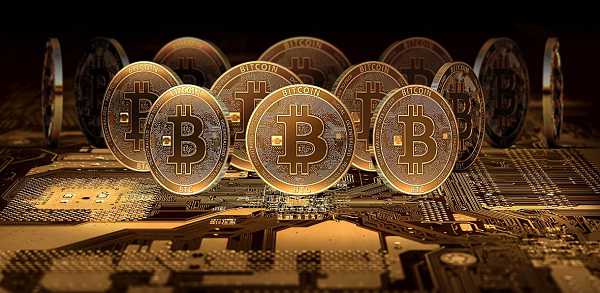There are quite a few applications for blockchain platforms, which we did discuss earlier, but it was a technology that was designed to work with the Bitcoin network to make sure that this network would be transparent but still allow for the security that people were looking for. Because of all this, it is common for people to assume that blockchain and cryptocurrencies are the same.

Learn more: Blockchain 3.0
There are some big differences between the two, and they are not the same. To start, Bitcoin is a type of digital currency that you can use to make purchases and send money all around the world. You can choose to join in the Bitcoin network, or with one of the other digital currencies, and then you would use those coins to make purchases and so on. This is a currency that is only found online, so you will never be able to print the currency and use it at your favorite stores that you can with traditional money. But many find this as a benefit because they can just find the stores they want to use online and then make their purchases.
There are quite a few benefits that come with using Bitcoin. You can make sure that the government stays out of your transactions, you can save money with the international trade because you will not need to deal with expensive intermediaries, and you will be amazed at how quickly these transactions can be finished.
The blockchain is a bit different, and it is described as a distributed ledger. It is in charge of keeping track of all sorts of transactions, and it can be set up to hold onto anything that is considered valuable, when someone enters new information into the blockchain, it is really hard to change this information later; you can only change the information if you get control of over half the computers on the network. This will make sure that the network is safe and that no one can go through and make changes to the transactions that are found on the blockchain.
Now, these two technologies can help out each other, and in fact,blockchain was released at the same time as Bitcoin to help this currency run. Since there is not a big bank or other government agency around to run the country, Bitcoin, as well as some of the other digital currencies that are out there, needed to have something in place that would build up the trust that users needed. Without blockchain being around, it would be hard to convince people that their transactions are safe and they would not be likely to use the system at all.
While these two are different types of technologies, it is unlikely that digital currencies would be as successful as they are today if blockchain was not around to help things out. Many people would choose to not go with these because they wanted to make sure that their money was as safe as possible. Blockchain adds that element of trust without people having to worry about whether someone can see his or her information, whether he or she needs that third party to help out, or something else.
Learn more: Blockchain 1.0
Does blockchain really help digital currencies ?

Does blockchain really help digital currencies
The big question now is how blockchain really works to help make these digital currencies successful. To understand how this happens, we will first need to take some time to look at how blockchain runs We talked about this a bit earlier in the guide, but there is a lot more that comes into play so let's take a look.
To review, a blockchain is basically going to be a database that can hold onto all of the transactions that occur on the Bitcoin network. The full copy of the blockchain, such as the one that you will find on the Bitcoin network, is going to contain each transaction that has ever occurred on the network since it started. With this information, it is possible for any users that would like to, to find out information on the transactions that go on within the network.
Now, this system is also set up to add in some security so that people can keep their information as safe as possible. Every block will be given a hash that is unique but which is still based on some of the information from the previous block (the miners are going to be responsible for this kind of work). This will end up creating a big chain of blocks that are meant to connect together in perfect order from start to finish. Through this particular method, each block is going to be in the right order, or there would be some issues with the hashes present.
Once a new block is added into the blockchain, it is then impossible to make any modifications to the transactions in that block. To try and make changes would mean that the hash for each block that came after it would have to be changed as well and this would result in a big mess. This is how things are supposed to be though. The creators came up with this system because they do not want to allow someone to enter the network and make changes without being quite noticeable.
Honest generators, who are known as the miners, will only be able to build on a new block if it is the newest block on the longest valid chain. The length is going to be calculated as a total to the combined difficulty in that chain, rather than how many blocks, although this distinction is not really that important except for a few types of attacks. A chain will be considered valid if all the transactions and the blocks that are found inside of it are valid, and only if there is the right genesis block in place.
If this process has gone smoothly with no issues along the way, all the blocks will lead all the way back to the genesis block without any issues. However, it is possible for this genesis block to have some forks inside of it, so there can be different directions. One-block forks are created when two blocks have been developed at the same time. If this does happen, the generating nodes will work to build on the block that they received first. And then there are times when a bigger fork will show up because the program was working to fix some bugs in the system.
Blocks that are near the end of some of the longer chains can be added to the main part because they do add some more value. However, if we are dealing with some blocks that are on shorter trains, which are sometimes called invalid chains, they are going to be left alone and not used. If the user of Bitcoin switches over to one of the longer chains, all of the ones on that shorter chain can then be queued so that they can be added in as well.
As this illustrates, there are quite a few ways that this amazing technology can benefit the users of digital currencies. This process is complex, but it shows what is going on each time you complete a transaction on the Bitcoin network, and it will help to keep your information safe and secure, which is why Bitcoin really needs the platform to work well.

Bitcoin netwok
Now, you may be wondering how you would get one of these blocks to get started and to keep your information secure, when you decide to join the Bitcoin network, you will receive your own unique address and an invitation to the network. Then that first block is going to be sent to you automatically. Depending on how many transactions that you complete, you will be able to fill up that block over so much time. Each block can hold onto a certain amount of transactions, and sometimes this will take a while based on how busy you are on the network.
After the block has some time to fill up, it will be time for that block to become a part of the permanent record and join the rest of the chain. Your chain may be long if you do many transactions on this network, but it could also be a bit smaller if you only get on the Bitcoin network on occasion. Over time, as they join the permanent record, these personal chains will be added into the big blockchains so that everything remains safe.
As we mentioned, this is where the miners are going to need to get to the work. They are in charge of creating some unique codes, or hashes, that will help hide the personal information inside of the blocks, while still keeping the information transparent. The new blocks will have hashes that link them back to the block in front of it and so on down the line. There are also some other requirements that are in place for creating these hashes, which will help to make sure that no one can mess with the system.
When the miners are successful for the work that they are doing, they will be rewarded with 25 Bitcoin. With how high the value of Bitcoin is today, this can be a good reward for helping to keep the whole network safe. The miners will receive a monetary reward for their work, and all of the Bitcoin users will know that their information is safe.
When the block has been given a new hash, it will then be sent on to join the main blockchain, and it will then be a part of the permanent records. Users can then check out all of the information that is there and make sure that all transactions are in the right place at the right time whenever they would want. Thanks to the work of the miners, and the basics of the blockchain system, your information is always going to be safe when using Bitcoin.
Blockchain has really made a difference in how Bitcoin and other digital currencies work. Blockchain has a lot of different applications, and it is already being developed to use in various industries throughout the world, but without it, Bitcoin would end up failing because it would not have a way to build up trust with the users.
Learn more: Blockchain application in Finance








